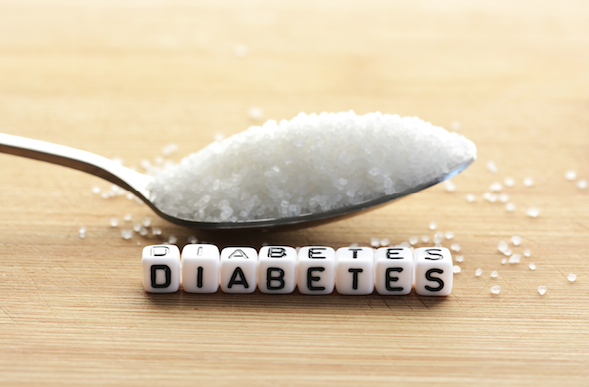
What is diabetes?
Diabetes is a chronic health condition that affects how your body is able to turn food into energy. The food you eat is broken down into sugar (glucose) and released into your bloodstream. As your blood sugar goes up, your pancreas releases insulin. This allows the blood sugar to enter your body’s cells for use as energy. A person with diabetes doesn’t make enough insulin or can’t properly use insulin. There are two main types of diabetes:
- • Type 1 diabetes occurs when your pancreas doesn’t produce enough insulin. This type of diabetes is usually diagnosed in children, teens and young adults, but it can develop at any age.
- • Type 2 diabetes occurs when your cells don’t respond normally to insulin, which is known as insulin resistance. Out of the 34 million Americans with diabetes, approximately 90%-95% of them have Type 2 diabetes.
What are the symptoms of diabetes?
Diabetes symptoms vary depending on how much your blood sugar is elevated. People with Type 2 diabetes may not initially experience any symptoms. However, those with Type 1 diabetes may experience severe symptoms that can develop in a short amount of time.
Signs and symptoms of Type 1 and Type 2 diabetes may include:
- • Thirst
- • Frequent urination
- • Extreme hunger
- • Unexplained weight loss
- • The presence of ketones in the urine
- • Fatigue
- • Blurred vision
- • Slow-healing sores
- • Frequent infections (e.g., gum, skin or vaginal infections)
How can you address diabetes?
In order to properly manage diabetes, it’s important to do the following:
- • Monitor your blood sugar—Carefully monitoring your blood sugar is the only way to make sure your blood sugar is within your target range.
- • Undergo insulin therapy, if prescribed—Many people with diabetes need insulin therapy to survive. There are multiple types of insulin available. Depending on your needs, your doctor may prescribe a mixture of insulin types to use throughout the day and night.
- • Eat healthy—Enjoy a diet rich in fruits, vegetables, lean proteins and whole grains, avoiding foods high in saturated fats and refined carbohydrates.
- • Stay physically active—Exercise lowers your blood sugar level by moving sugar into your cells where it’s used for energy. It’s important to aim for at least 30 minutes of aerobic exercise a day.
Where can I learn more?
If you are experiencing symptoms of diabetes, contact your doctor. For more information on diabetes, visit the American Diabetes Association website at www.diabetes.org. Read More















